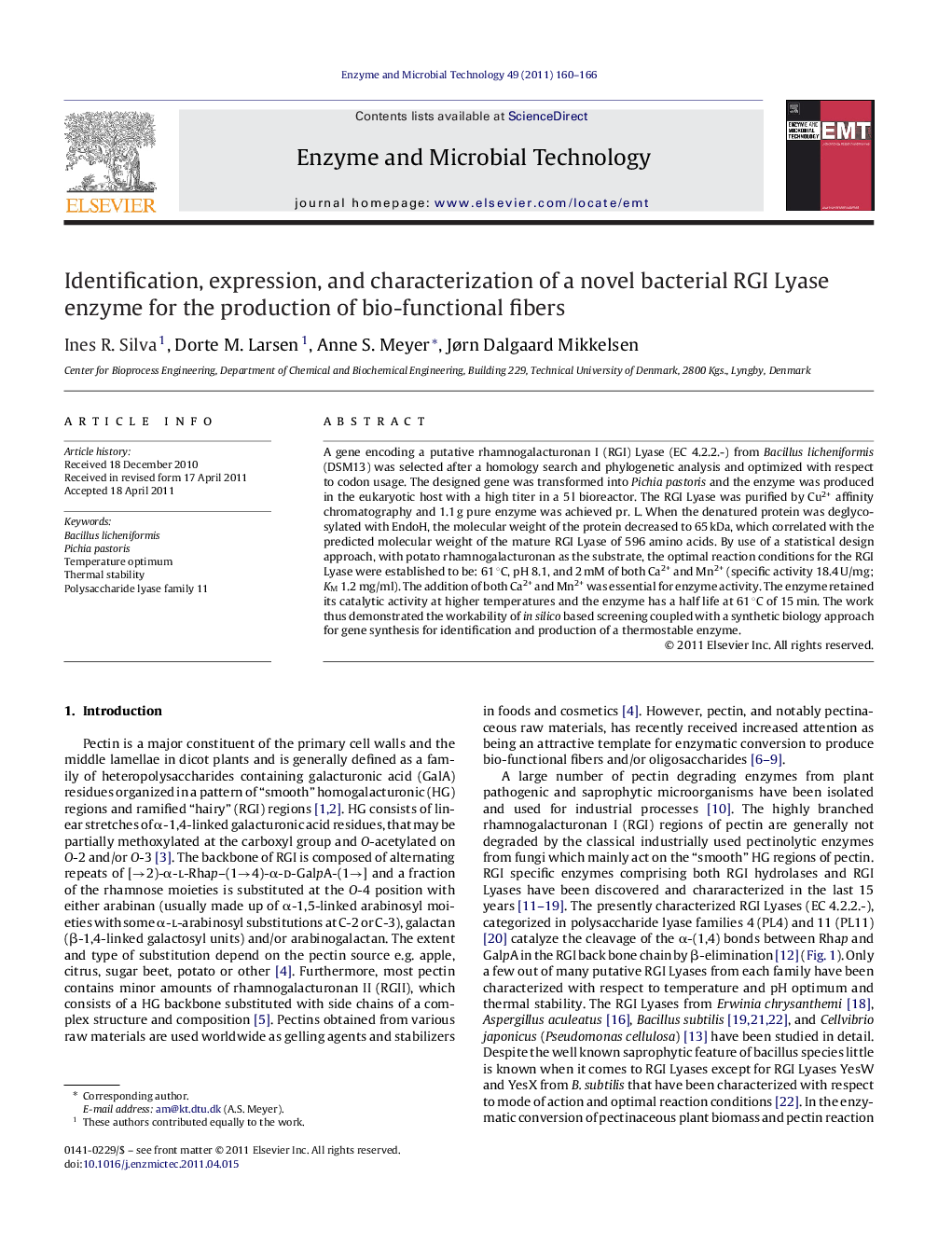| Article ID | Journal | Published Year | Pages | File Type |
|---|---|---|---|---|
| 17400 | Enzyme and Microbial Technology | 2011 | 7 Pages |
A gene encoding a putative rhamnogalacturonan I (RGI) Lyase (EC 4.2.2.-) from Bacillus licheniformis (DSM13) was selected after a homology search and phylogenetic analysis and optimized with respect to codon usage. The designed gene was transformed into Pichia pastoris and the enzyme was produced in the eukaryotic host with a high titer in a 5 l bioreactor. The RGI Lyase was purified by Cu2+ affinity chromatography and 1.1 g pure enzyme was achieved pr. L. When the denatured protein was deglycosylated with EndoH, the molecular weight of the protein decreased to 65 kDa, which correlated with the predicted molecular weight of the mature RGI Lyase of 596 amino acids. By use of a statistical design approach, with potato rhamnogalacturonan as the substrate, the optimal reaction conditions for the RGI Lyase were established to be: 61 °C, pH 8.1, and 2 mM of both Ca2+ and Mn2+ (specific activity 18.4 U/mg; KM 1.2 mg/ml). The addition of both Ca2+ and Mn2+ was essential for enzyme activity. The enzyme retained its catalytic activity at higher temperatures and the enzyme has a half life at 61 °C of 15 min. The work thus demonstrated the workability of in silico based screening coupled with a synthetic biology approach for gene synthesis for identification and production of a thermostable enzyme.
